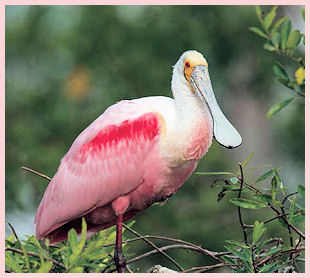|
|
 |
|
|

Be ready for hurricane season. Today review/update insurance policies. Make a list of items to replenish hurricane emergency supplies and start thinking about how you will prepare your home for hurricane season.¹ Make a visual or written record of all of your household possessions. Record model and serial numbers. This list could help you prove the value of what you owned if those possessions are damaged or destroyed, and can assist you to claim deductions on taxes. Do this for all items in your home, including expensive items such as sofas, chairs, tables, beds, chests, wall units, and any other furniture too heavy to move. Store a copy of the record somewhere away from home, such as in a safe deposit box. HURRICANE HAZARDS.
While hurricanes pose the greatest threat to life and property, tropical storms and depression also can be devastating. The primary hazards from tropical cyclones (which include tropical depressions, tropical storms, and hurricanes) are storm surge flooding, inland flooding from heavy rains, destructive winds, tornadoes, and high surf and rip currents.
• Storm surge is historically the leading cause of hurricane related deaths in the United States. Storm surge and large battering waves can result in large loss of life and cause massive destruction along the coast.
• Flooding from heavy rains is the second leading cause of fatalities from landfalling tropical cyclones. This flooding can persist for several days after a storm has dissipated.
• Winds from a hurricane can destroy buildings and manufactured homes. Signs, roofing material, and other items left outside can become flying missiles during hurricanes.
• Tornadoes can accompany landfalling tropical cyclones. These tornadoes typically occur in rain bands well away from the center of the storm.³
EMERGENCY KIT.
Put Together An Emergency Kit Be sure to include these items:
• Flashlight and/or battery-powered lantern
• Battery-powered radio
• Extra batteries
• Bottled water (At least three gallons of water per person)
• First aid kit and essential medications – prescription medications and list of medications for each person
• Form of Identification
• Canned food and non-electric can opener
• Special items for infants, elderly or disabled family members
• High energy foods – peanut butter, jelly, crackers, etc
• Utility knife, shut off wrench, and pliers
• Tape, paper and pencils
• Extra pair of glasses and sunglasses
• Plastic sheeting
• Soap and toiletries
• Plastic garbage bag and ties
• Pet food, carriers and leashes
• Protective clothing, rainwear
• Clothing and bedding: a change of clothes, footwear and a sleeping bag and pillow for each household member
• Car keys and keys to the place you may be going (friend’s or relative’s home)
• Written instructions on how to turn off electricity, gas and water if authorities advise you to do so (Remember, you’ll need a professional to turn them back on.)
Important papers to take with you in a portable,waterproof container:
• Driver’s license or personal identification
• Social Security card
• Proof of residence (deed or lease)
• Insurance policies
• Birth and marriage certificates
• Stocks, bonds and other negotiable certificates
• Wills, deeds, and copies of recent tax returns²

¹www.weather.gov/wrn/hurricane-preparedness
²www.getagameplan.org/make-a-plan/family-plan/family-plan-step-2/
³www.weather.gov/safety/hurricane
|
DETAILED SUMMARY: CLEAN AIR ACT RESULTS As read on the Environmental Protection Agency web site: www.epa.gov For more than forty-five years the Clean Air Act has cut pollution as the U.S. economy has grown. • Experience with the Clean Air Act since 1970 has shown that protecting public health and building the economy can go hand in hand.
• Clean Air Act programs have lowered levels of six common pollutants -- particles, ozone, lead, carbon monoxide, nitrogen dioxide and sulfur dioxide -- as well as numerous toxic pollutants. • From 1970 to 2015, aggregate national emissions of the six common pollutants alone dropped an average of 70 percent while gross domestic product grew by 246 percent. This progress reflects efforts by state, local and tribal governments; EPA; private sector companies; environmental groups and others. • The emissions reductions have led to dramatic improvements in the quality of the air that we breathe. Between 1990 and 2015, national concentrations of air pollutants improved 85 percent for lead, 84 percent for carbon monoxide, 67 percent for sulfur dioxide (1-hour), 60 percent for nitrogen dioxide (annual), and 3 percent for ozone. Fine particle concentrations (24-hour) improved 37 percent and coarse particle concentrations (24-hour) improved 69 percent between 2000, when trends data begins for fine particles, and 2015. (For more trends information, see EPA’s Air Trends site.) • These air quality improvements have enabled many areas of the country to meet national air quality standards set to protect public health and the environment. For example, all of the 41 areas that had unhealthy levels of carbon monoxide in 1991 now have levels that meet the health-based national air quality standard. A key reason is that the motor vehicle fleet is much cleaner because of Clean Air Act emissions standards for new motor vehicles. • Airborne lead pollution, a widespread health concern before EPA phased out lead in motor vehicle gasoline under Clean Air Act authority, now meets national air quality standards in most areas of the country. • State emission control measures to implement the Act, as well as EPA’s national emissions standards, have contributed to air quality improvements. |
|
 About the Roseate Spoonbill About the Roseate Spoonbill
(Platalea ajaja in the Pelecaniformes order)
Gorgeous at a distance and bizarre up close is the Roseate Spoonbill. Locally common in coastal Florida, Texas, and outhwest Louisiana, they are usually in small flocks, often associating with other waders. Spoonbills feed in shallow waters, walking forward slowly while they swing their heads from side to side, sifting the muck with their wide flat bills. www.audubon.org/field-guide/bird/roseatespoonbill The flamboyant Roseate Spoonbill looks like it ame straight out of a Dr. Seuss book with its bright pink feathers, red eye staring out from a partly bald head, and giant spoon-shaped bill. Groups sweep their spoonbills through shallow fresh or salt waters snapping up crustaceans and fish. They fly with necks outstretched, to and from foraging and nesting areas along the coastal southeastern U.S., and south to South America. These social birds nest and roost in trees and shrubs with other large wading birds. - The Roseate Spoonbill is 1 of 6 species of Spoonbills in the world and the only one found in the Americas.
- Roseate Spoonbill chicks don’t have a spoon-shaped bill immediately after hatching. When they are 9 days old the bill starts to flatten, by 16 days it tarts to look a bit more spoonlike, and by 39 days it is nearly full size.
- Roseate Spoonbills get their pink coloration from the foods they eat. Crustaceans and other aquatic invertebrates contain pigments called carotenoids hat help turn their feathers pink.
www.allaboutbirds.org |
|
Tips for You and Your Children
RESPECTING OUR ENVIRONMENT
• When brushing your teeth, shaving or washing dishes, remember to switch the tap off when you are not using the water.
• Wait to use the washing machine and dishwasher until you have capacity loads.
• Switch off lights whenever you leave a room (at home and at the office.)
• Cultivate a love for nature by awakening in your children an appreciation for thenatural world.
• Plant a garden. (Enjoy nature, teach your children to embrace nature and
understand where food comes from.)
• Pick up litter. 
Once you know, understand and Respect Our Environment, we can greatly appreciate our responsibility! Ideas and pointers:
10 Simpleways to Respect our
and
6 Tips go Teach Your Kids to Respect the Environment |
|
|
|
|